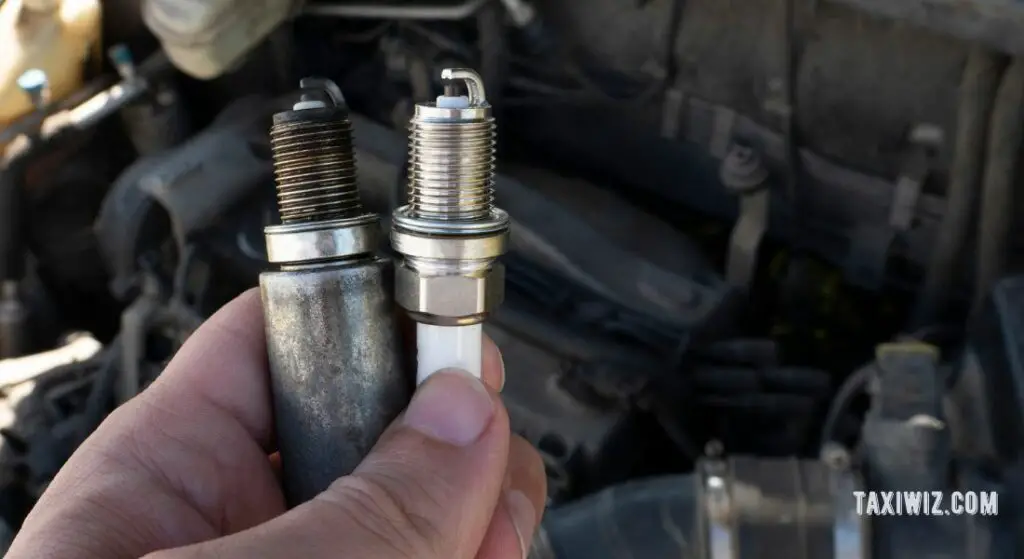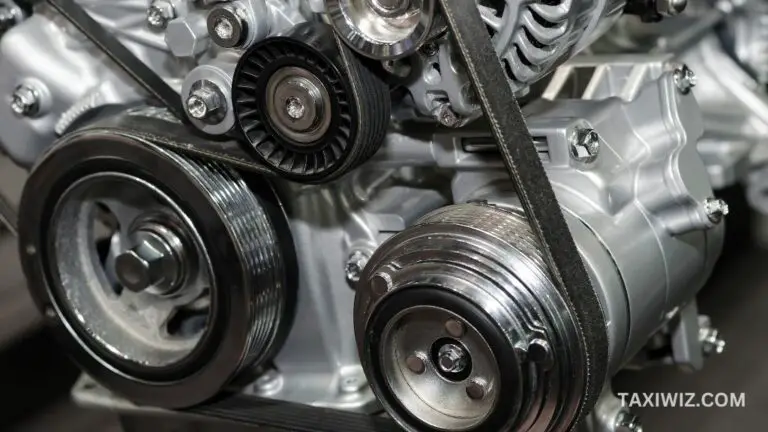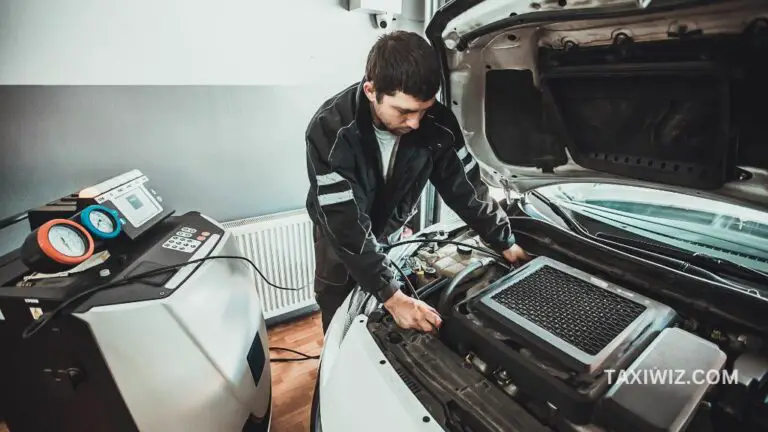Will Oil On Spark Plugs Cause Car Not To Start? (Unveiling The Culprit)
Having difficulty starting the engine is likely the most bothering thing on a busy day. While this may be a cause of many issues if you can smell burning oil during the catastrophe, then better check the spark plugs!
But, will oil on spark plugs cause car not to start? Yes, it will. While a variety of causes might contribute to oil fouling, the end result is typically the same. The oil acts as an insulator, preventing the spark from igniting the fuel-air combination in the combustion chamber. And this is necessary for your automobile to start and function smoothly.
In this article, we’ll take a deeper dive into oil leaks, their causes, and also their symptoms. So, whether you’re a seasoned technician or an automotive newbie, brace up because this is going to be an educational ride!

Table: Oil On Spark Plug Causes
Before we jump into details, let’s look into a summary of the different causes and solutions.
| Causes | Solution |
| Worn Out or Broken Piston Rings | Replace the worn-out or broken piston rings |
| Faulty Valve Cover Gasket | Replace the faulty valve seals |
| Faulty PCV Valve Or Clogged Crankase | Replace the faulty PCV valve |
| Cylinder Head or Engine Block Damage | Repair or replace the damaged engine block or cylinder head |
| Faulty Turbocharger | Replace or rebuilt the turbocharger |
| Faulty O-Rings | Replace The O-Rings |
Why Will Oil On Spark Plugs Cause Car Not To Start?
When you turn on your car’s ignition, the ignition coil generates a high-voltage pulse delivered to the spark plug. This pulse arcs over the space at the tip of the plug, sparking the air-fuel combination in the engine’s combustion chamber. But what happens if oil gets on your spark plug?
Spark plugs should be clean in regular functioning, with a little brownish or white tinge on the insulator tip. However, the oil may get onto the spark plug for a variety of reasons, including worn-out piston rings, valve seals, or even a defective PCV valve. This is referred to as oil fouling.
Troubleshooting Oil On Spark Plugs Problems
Oil on spark plug can be caused by various reasons. Here we talk about the most common causes and their solutions.
#1. Worn Out or Broken Piston Rings
The piston rings provide a seal between the piston and the cylinder wall, keeping oil out of the combustion chamber. These rings may wear out or break over time, allowing oil to pour onto the spark plug.
- Solution
Your piston rings may need to be changed if they are worn out or cracked. This procedure entails dismantling the engine to have access to the pistons. Unless you have substantial vehicle repair skills, it is typically best left to professional specialists.
#2. Faulty Valve Cover Gasket
Valve seals prevent oil from entering the combustion chambers from the cylinder head. Oil may seep into the spark plugs if these seals wear out or break.
- Solution
If the valve seals are broken or worn, they must be changed as well. This often entails removing the cylinder head to get access to the valves. Moreover, this too requires the use of specialized equipment and skills. Thus, it should be handled by a skilled technician.
#3. Faulty PCV Valve Or Clogged Crankase
The Positive Crankcase Ventilation (PCV) valve is part of the emissions control system of your car. It aids in the removal of undesirable gases from the engine. If the PCV valve fails to work properly or is clogged, an overabundance of oil may reach the combustion chamber, causing oil fouling of the spark plug.
- Solution
A faulty PCV valve is generally simple to replace. In most cases, this entails detaching the valve from the hose that connects it to the engine and replacing it with a new one. It’s a low-cost component that can frequently be replaced at home if you’re familiar with basic auto maintenance.
Here is a step-by-step guide:
Step 1: Locate the Valve
While the position varies by model, the PCV valve is often placed on the engine’s valve cover. If you’re not sure where it is, see your owner’s manual.
Step 2: Remove the Old Valve
The valve should be attached to a hose, and just disconnecting the hose should be enough. Twist it counterclockwise and pull it to release the valve. However, if it’s tightly fitted, use a wrench or piler but make sure you don’t apply too much force.
Step 3: Attach the new valve
Now put in place the new valve and twist it clockwise to attach it in place. Reattach the hose to the other end of the valve.
Step 4: Check for Proper Installation
Start your engine and double-check that everything is in working order. Examine the area surrounding the new PCV valve for any leaks. You have successfully changed the PCV valve if the engine runs smoothly and there are no leaks.
To guide yourself better, check out this video:
#4. Cylinder Head or Engine Block Damage
Oil may seep onto the spark plug if there is considerable damage or a break in the cylinder head or engine block.
- Solution
Damage to the cylinder head or engine block will need more extensive repairs. In some circumstances, the damaged component may be restored, but it must be replaced in most cases. Moreover, it’s wise to seek help from a professional rather than trying by yourself.
#5. Faulty Turbocharger
A malfunctioning turbocharger may cause oil to flow into the combustion chamber, causing oil fouling on the spark plugs.
- Solution
If a turbocharger fails, it should be replaced or repaired. Furthermore, regular maintenance of the turbocharger system, such as periodic oil changes and the use of the proper kind of oil, may help avoid this problem.
#6. Faulty O-Rings
O-rings serve to seal connections and prevent leaks in different areas of the engine. If the O-rings associated with the oil channels or seals fail, an oil leak that may reach the spark plugs may occur.
- Solution
O-rings that have failed must be replaced. Depending on where they are, this might involve extensive disassembly of engine components. Thus it’s wise to leave it to a professional hand!
Symptoms of Oil On Spark Plug
Now that you know the causes, here are a few symptoms for your convenience to stay a step ahead of the problem.
- Difficulty Starting: Because oil fouling interferes with the ignition process, your automobile may struggle or fail to start.
- Visible Oil on Spark Plugs: Oil on the spark plugs may cause the engine to operate unevenly, misfire, or even halt. This might be seen as rough idling, a lack of acceleration power, or overall poor engine performance.
- Increased Fuel Consumption: If your spark plugs aren’t performing properly due to oil fouling, your engine has to work harder, resulting in higher fuel consumption.
- Oil Fouling on Spark Plugs: Physical examination might indicate oil fouling. If the spark plug is removed and is obviously moist and black, this indicates that there is oil on the spark plug.
- The Smell of Burning Oil: When your automobile is running, you may experience the smell of burning oil if you have significant oil fouling.
- Blue Smoke from Tailpipe: Blue or grey smoke coming from the exhaust pipe is one of the unmistakable indicators of oil on spark plugs. The smoke is caused by oil burning alongside the fuel in the combustion chamber. This is not a natural state and suggests that oil is present where it should not be.
- Engine Misfire: Another typical indication of oil on spark plugs is an engine misfire. When oil fouling disrupts the ignition process, the spark plug may not ignite at all or at all. This irregularity might cause the engine to misfire, resulting in a rough idle, loss of power, or periodic sputters.
- Engine Backfires: When an engine backfires, it’s usually due to an incorrect air-to-fuel ratio. If oil fouls the spark plugs, it may interfere with the combustion process and cause a rich fuel situation, resulting in backfires.
Conclusion
So, will oil on spark plugs cause car not to start? Yes, they might prevent your automobile from starting and degrade its performance. This is an indication of a more serious technical problem, usually caused by old or damaged engine components.
Moreover, recognizing the signs of oil fouling and comprehending its origins are the first stages in resolving this issue. Preventive maintenance and frequent inspections are critical for detecting possible problems before they worsen, preserving the lifetime and efficiency of your vehicle.






